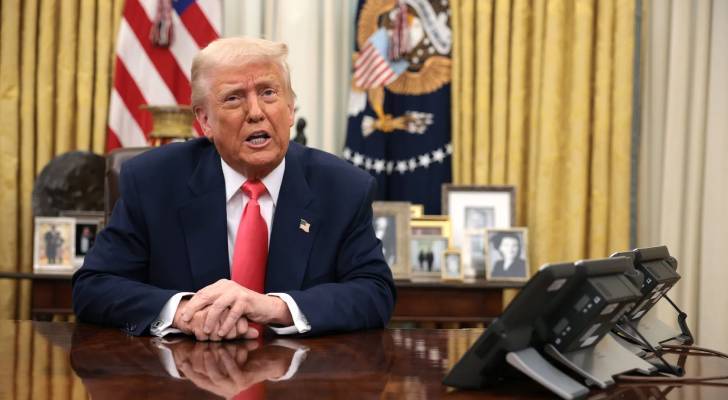Trump’s 21-point plan: Key details, opposition, and red lines
Trump’s 21-point plan for Gaza aims to end the war, secure the release of captives, and establish a framework for postwar governance and long-term peace in the Middle East.
While the full details have not been officially released, international outlets such as The Washington Post have reported on several key points, citing sources familiar with the plan.
What the Initiative Includes:
The initiative combines elements from previous proposals with new measures designed to ensure a sustainable ceasefire and reconstruction. Among its main components:
- Immediate release of all captives, reportedly within 48 hours of the ceasefire.
- Removal of Hamas from power and the destruction of its offensive weapons.
- Amnesty for Hamas members who commit to peaceful coexistence with 'Israel', including the option to leave Gaza temporarily or return later.
- A temporary ceasefire that would transition into a permanent arrangement, alongside a gradual withdrawal of IDF forces.
- Establishment of an alternative Gaza government, independent of Hamas, with international oversight for reconstruction projects in health, education, and housing.
- Palestinian Authority (PA) reforms to improve governance and transparency, with eventual administrative authority over Gaza after successful implementation, supported in the interim by a temporary international administration.
- International security coordination involving moderate Arab and Muslim states.
- Delivery of aid to Gaza in full and without restrictions.
- Conditional path toward a future Palestinian state based on successful reconstruction and PA reforms.
What Netanyahu Opposes
According to Hebrew media, Prime Minister Benjamin Netanyahu has voiced strong reservations about several clauses.
- He doubts the PA’s ability to implement Gaza reforms and considers the disarmament clause “absurd” and insufficiently defined.
- Netanyahu also opposes allowing Hamas members to return to Gaza and resists including a path toward a Palestinian state, citing concerns about a de facto two-state solution.
- Sovereignty over parts of the West Bank remains another key sticking point.
Since arriving in Washington, Netanyahu has reportedly held multiple meetings with US special envoy Steve Witkoff to resolve these disputes, with sources noting disagreements over wording rather than the overall concept.
Hamas’ Concerns
The Palestinian resistance group Hamas on Sunday denied circulating media reports claiming new proposals had been presented regarding a ceasefire deal, stressing that negotiations have been completely stalled since the attack on Doha Sept 9.
Arab States’ Amendments
Egypt, Qatar, Saudi Arabia, and Jordan have proposed amendments according to a report published on an arabic news outlet, including:
- Gradual IOF withdrawal with international forces deployed at borders.
- A Palestinian technocratic government with PA participation rather than full international control.
- A demand for Hamas to lay down arms, but not total dismantling of military capabilities.
- Creation of an international council to oversee the process while leaving day-to-day management to Palestinians.
- Assurance from Trump that there would be no annexation of the West Bank or Gaza.
Smotrich’s Red Lines
Ahead of Netanyahu’s talks with Trump, Finance Minister Bezalel Smotrich outlined six red lines for any agreement according to "The times of Israel":
- Full dismantling and demilitarization of Hamas and Gaza.
- Israel maintaining complete military control, including the Philadelphi Corridor.
- No role for the PA in Gaza governance.
- No indication of a future Palestinian state.
- No Qatari involvement.
- Egypt’s border to be open for free movement of Gazans.
- Affirmation that the West Bank remain inseparable parts of 'Israel', with alternative governance frameworks for the Palestinian population.




